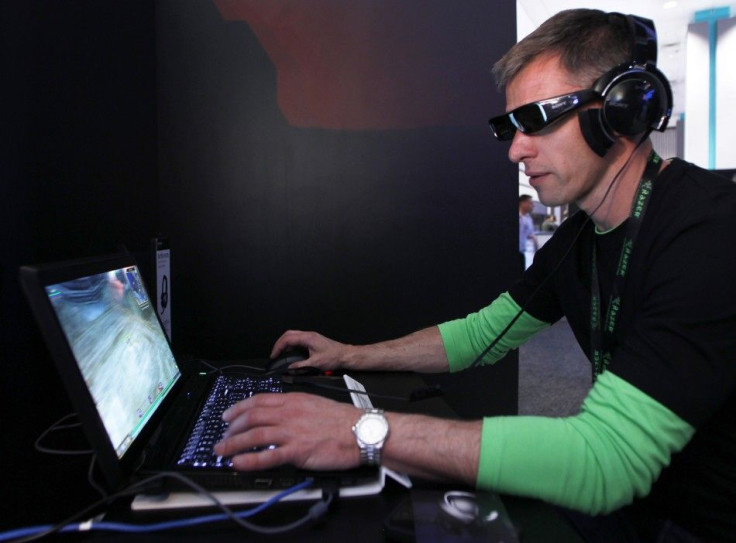Looking at 3D Beyond the Theater

Outside of special IMAX movies designed for limited theater showings, there wasn't much talk about 3D as the future of the entertainment industry in 1993.
Back then, the idea of 3D in popular motion picture features was outdated and considered campy, a product of the 1950s. The notion of 3D TVs? Unheard of. Cell phones had yet to become popular or advanced enough to even consider 3D graphics attached to them. Same goes for video game systems and personal computers.
One company, TrueVision out of Perth, Australia, went against popular belief and started developing 3D displays around that time. TrueVision, which would ultimately become DDD, signed an agreement with Samsung to develop 3D displays. The company fell into its current business, 2D to 3D conversion, and eventually would discover a gold mine of interest.
When we were developing 3D display at that time, some of our customers were asking for additional requirements, said Christopher Yewdall, Executive Director and Chief Executive Officer of DDD. Around that time, 1997-1998, the main places you'd see 3D is theme parks and IMAX theaters. It was really costly and labor-intensive to produce those films.
That's where the idea of converting 2D to 3D came into play. DDD worked with IMAX to convert 2D to 3D for a movie about Siegfried and Roy. It did the same for IMAGICA USA on a film called Ocean of Light. It was around that time things began to pick up for the company. Along with agreements with Apple and Motorola to license its technology, it raised $10 million in an IPO on the London Stock Exchange's Alternative Investment Market.
By 2003, the company was ready for commercialization. In 2003, it licensed TriDef 3D suite of software to Sharp for its 3D laptop PC.
A step beyond
As the rest of the world was beginning to show interest in 3D feature films beyond documentaries in the middle of last decade, DDD was already looking ahead and beyond film.
We don't participate in converting 2D to 3D for movies. It's a very labor-intensive process and there's reasonable competition for that. We took a conscious decision to effectively go after the 3D market like it's a pyramid, said Yewdall. At the top of the pyramid you have the highest quality stuff. That's theatrical 3D movies. We go after the middle and lower quality stuff, where the volumes are higher and prices lower.
Yewdall is referring to 3D TV, 3D phones, 3D PCs and 3D everything but movies. Whereas most 3D films are filmed and created using 3D cameras, TV and other modes of entertainment are not.
Most products in the PC, TV and mobile market ship with an automatic 2D to 3D converter - Samsung, LG, all of the big electronics companies allow you to convert the content you are watching. That business is growing dramatically, Yewdell said.
Despite promise, sales of 3D TVs have continued to struggle due to hardware and content issues according to The NPD Group.
Concerns about price and an aversion to 3D glasses both saw relative increases as inhibitors to adopting 3D televisions, Ross Rubin, executive director of industry analysis at The NPD Group, said in a statement. However, as prices and price premiums for 3DTV decline, glasses are becoming a more prominent inhibitor and are poised to overtake price.
If 3D can get past the cost and glasses issue, it could have an opening with 2D to 3D conversion. According to Yewdell, this technology allows you to watch anything in 3D.
Even if it wasn't made in 3D, it can add depth, Yewdell said. There's a need for broadcast content to have a cost effective way to showcase 3D. That's what 2D to 3D does.
He is not deterred by the adoption rates, saying the numbers dwarf those of HDTVs in the late 1990s. As the prices came down on HDTV, it grew rapidly.
DDD sees even more promise in PCs and mobile phones. He says chips from AMD and Intel will open up the gaming market for 3D, which will be a boon for 3D on PCs. With the introduction of the first 3D phones in America from HTC and LG, he expects that market to grow dramatically in 2012.
Over the past year, the company has announced several partnerships with the AMDs, Hewlett-Packards and Texas Instruments of the world. He says the company has gone from shipping out 2-3 million of its PC conversion software in 2009 to 10-12 million last year.
Follow Gabriel Perna on Twitter at @GabrielSPerna
© Copyright IBTimes 2024. All rights reserved.




















